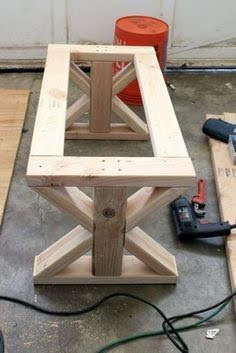Woodworking projects often require the use of polishing compound to achieve a professional and refined finish. Polishing compound is a versatile product that helps to enhance the look of woodwork by removing scratches, imperfections, and dullness while leaving behind a smooth, glossy surface. In this article, we will explore what exactly polishing compound is and why it is used in woodworking projects.
Polishing compound is a mixture of abrasive particles suspended in a binding material, such as wax or oil. It comes in different forms, including bars, powders, and creams. The type of compound used depends on the desired outcome and the type of wood being worked on.
But why use polishing compound in woodworking projects? Firstly, it helps to restore the natural beauty of wood by removing any blemishes or surface defects. Whether you are working on furniture, cabinetry, or decorative items, using polishing compound can significantly improve their appearance. Additionally, it allows for better adhesion when applying protective finishes such as varnishes or waxes.
In the following sections of this article, we will delve deeper into the world of polishing compounds. We will discuss different types of compounds available in the market and offer guidance on choosing the right one for your specific woodworking project. We will also provide step-by-step instructions on how to apply the compound effectively and troubleshoot common issues that may arise during the process.
By understanding how to use polishing compound correctly and employing effective techniques, you can elevate your woodworking skills to new heights. So let’s dive into this comprehensive guide on using polishing compound on woodworking projects and unlock its potential for achieving stunning results.
Understanding the Different Types of Polishing Compounds
When it comes to enhancing the look of your woodworking project, using polishing compound is essential. However, with so many different types of polishing compounds available on the market, it can be overwhelming to choose the right one for your specific needs. In this section, we will provide a comprehensive guide to help you understand the different types of polishing compounds and their respective uses in woodworking projects.
Liquid Polishing Compounds
Liquid polishing compounds are popular among woodworkers due to their ease of use and versatility. They come in various forms such as paste, gel, or spray and can be applied directly to the wood surface using a cloth or applicator. Liquid polishing compounds are ideal for removing light scratches, oxidation, and blemishes from the wood surface. They also leave a glossy finish that enhances the natural beauty and grain pattern of the wood.
Solid Polishing Compounds
Solid polishing compounds are usually available in bar or stick form. They contain abrasive particles that help remove deeper scratches and imperfections from the wood surface. Solid compounds require some effort to apply as they need to be rubbed onto the wood using moderate pressure. They are particularly effective for restoring heavily worn or damaged wood surfaces before applying a final finish.
Abrasive vs Non-Abrasive Polishing Compounds
Another important consideration when choosing a polishing compound is whether you need an abrasive or non-abrasive formula. Abrasive compounds contain tiny particles that physically abrade the wood surface to remove imperfections while non-abrasive compounds rely on chemical reactions to restore shine and luster.
It is essential to select the appropriate type of polishing compound based on your project’s requirements and desired outcome. Consider factors such as the level of damage or wear on your woodwork, the type of wood being worked with (softwood or hardwood), and the specific finish you want to achieve. By understanding the different types of polishing compounds available, you can make an informed decision and ensure optimal results for your woodworking project.
Choosing the Right Polishing Compound for Your Woodworking Project
Choosing the right polishing compound for your woodworking project is essential to achieve the desired finish and enhance the look of your woodwork. There are several factors you should consider when selecting a polishing compound, as different compounds have varying abrasive levels and are designed for specific purposes.
- Material Type: Consider the type of wood you are working with. Soft woods, like pine or cedar, require a different polishing compound than hardwoods, such as oak or maple. Some polishing compounds may work better on certain types of wood, so it’s important to choose one that is suitable for your specific project.
- Abrasive Level: Polishing compounds come in various levels of abrasiveness, ranging from coarse to fine. The level of abrasiveness needed depends on the condition of your woodwork and the desired outcome. For minor imperfections or scratches, a medium abrasive compound might suffice, while heavily damaged or dull surfaces might require a more aggressive abrasive.
- Grit Size: The grit size of a polishing compound determines the smoothness and shine it can achieve on the surface. Fine-grit compounds provide a higher gloss finish, while coarser-grit compounds are ideal for initial sanding and rougher surfaces. Consider the level of polish you want to achieve when choosing the appropriate grit size.
- Application Method: Some polishing compounds are meant to be applied by hand using a cloth or pad, while others are specifically designed for use with power tools like buffing machines or sanders. Consider your preferred method of application and ensure that the chosen compound is compatible.
By carefully considering these factors, you can choose a polishing compound that will effectively enhance the look of your woodworking project. Remember to always test the chosen compound on a small inconspicuous area before applying it to your entire woodwork.
Understanding how to choose the right polishing compound for your woodworking project is crucial for achieving professional results. With the wide range of options available, it’s important to take into account factors such as material type, abrasive level, grit size, and application method. By selecting a polishing compound that aligns with your project’s specific needs, you can ensure a flawless finish and a woodwork piece that will impress.
However, it’s worth noting that the choice of polishing compound is not the only factor in achieving outstanding results. Proper preparation of the woodwork before applying the compound is also vital. In the next section, we will explore the necessary steps to prepare your woodworking project for polishing, including sanding and surface cleaning techniques.
Preparing Your Woodworking Project for Polishing
Gather the Necessary Tools and Materials
Before you begin sanding and cleaning the surface of your woodworking project, it is important to gather all the necessary tools and materials. This will ensure that you have everything within reach and can work efficiently. Some of the essential items you will need include sandpaper (in various grits), a sanding block or powered sander, a vacuum or brush for dust removal, and cleaning products suitable for wood surfaces.
Sanding the Wood Surface
Sanding is a crucial step in preparing your woodworking project for polishing. It helps to smooth out any imperfections, removes old finishes, and opens up the pores of the wood to better absorb the polishing compound.
Start by determining the appropriate grit of sandpaper to use based on the condition of your wood surface. Coarser grits (around 80-120) are suitable for removing old finishes or heavy scratches, while finer grits (around 180-220) are ideal for achieving a smooth surface.
Begin sanding with coarse grit paper and gradually work your way up to finer grits, making sure to evenly cover the entire surface. Use consistent pressure and back-and-forth or circular motions. Be mindful not to apply too much pressure as it may damage or create unevenness on the wood surface. As you progress through each grit, remember to remove dust between sandings using a vacuum cleaner or brush.
Cleaning the Surface
After completing the sanding process, it’s important to thoroughly clean the surface of your woodworking project before applying any polishing compounds. Use a damp cloth or sponge with mild soap and water to gently wipe away any dust, dirt, or residue from sanding. Make sure that your cloth is not overly wet as excessive moisture can cause damage to the wood.
Once you have cleaned the surface, allow it to dry completely before moving on to the next step. This will prevent any trapped moisture from affecting the performance of the polishing compound and ensure a smooth application. After drying, inspect the wood surface for any remaining imperfections or debris, and make any necessary touch-ups before proceeding with the polishing process.
By properly preparing your woodworking project through sanding and surface cleaning, you create a solid foundation for achieving a flawless finish. Taking the time to sand away imperfections and clean away dust and debris will enhance the effectiveness of the polishing compound and ultimately contribute to a professional-looking end result.
Step-by-Step Guide
Polishing compound is a great tool for achieving a smooth and shiny finish on your woodworking projects. Follow this step-by-step guide to learn how to apply polishing compound effectively and enhance the look of your woodwork.
Step 1: Gather your materials
Before you begin, make sure you have all the necessary materials at hand. This includes the polishing compound, a clean cloth or buffing pad, and safety equipment such as gloves and goggles.
Step 2: Prepare the surface
Ensure that your woodwork is properly prepared before applying the polishing compound. Start by sanding the surface with fine-grit sandpaper in order to smooth out any imperfections or rough spots. Then, use a tack cloth or vacuum cleaner to remove any dust or debris.
Step 3: Apply the polishing compound
Dip a clean cloth or buffing pad into the polishing compound. Begin applying it to the woodwork using circular motions. Make sure to spread the compound evenly across the surface, working in small sections at a time.
Step 4: Buff the surface
After applying the polishing compound, use a clean cloth or buffing pad to gently buff the surface. Again, work in circular motions and apply steady pressure. This will help distribute and blend the polishing compound, creating a smooth and glossy finish on your woodwork.
Remember, it’s important not to rush through these steps. Take your time and work meticulously for best results. With practice, applying polishing compound will become second nature and you’ll be able to achieve professional-looking finishes on all of your woodworking projects.
Pro Tips for Achieving a Professional Finish
When it comes to using polishing compound on a woodworking project, there are several techniques that can help you achieve a professional finish. These pro tips will guide you in effectively using polishing compound to enhance the look of your woodwork.
Firstly, one important technique is to apply the polishing compound in the direction of the wood grain. This helps to ensure an even application and prevents any streaks or swirl marks from forming. When applying the compound, use a clean, soft cloth or applicator pad and gently rub it onto the surface of the wood in long, smooth strokes.
Secondly, it’s essential to buff the wood after applying the polishing compound. Buffing helps to remove any excess product and further enhances the shine and smoothness of the wood. Use a clean cloth or buffing pad and make circular motions while applying slight pressure. This will help to evenly distribute the compound and achieve a glossy finish.
Another technique that can be useful is layering. Instead of applying one thick coat of polishing compound, consider applying multiple thin layers. Allow each layer to dry completely before adding another one. Layering helps to build up the shine gradually and ensures a more durable finish.
Additionally, it is important to remember that less is more when it comes to using polishing compound. Applying too much compound can lead to a sticky residue or uneven finish. Start with a small amount and add more if needed.
In summary, using these pro tips will help you achieve a professional finish when using polishing compound on your woodworking project. Remember to apply in the direction of the grain, buff after application, consider layering for added durability, and use only a small amount at a time for best results.
| Technique | Description |
|---|---|
| Apply in the direction of the wood grain | This technique ensures an even application and prevents streaks or swirl marks. |
| Buffing | Buffing removes excess product and enhances the shine and smoothness of the wood. |
| Layering | Applying multiple thin layers gradually builds up the shine and ensures a more durable finish. |
| Use only a small amount at a time | Applying too much compound can lead to a sticky residue or uneven finish, so it is best to start with a small amount. |
Troubleshooting Common Issues
During the process of polishing a woodworking project, there can be common issues that arise. It is important to be aware of these issues and know how to address and prevent them. By troubleshooting common problems, you can ensure that your polishing process goes smoothly and you achieve the desired professional finish.
One common issue that may occur during the polishing process is swirl marks or scratches on the surface of the wood. This can happen if you apply too much pressure while using the polishing compound or if your sanding technique was not done properly. To address this issue, you can try using a finer grit sandpaper to remove the swirl marks or scratches and then reapply the polishing compound.
Another common problem is uneven color or shine on the wood surface after applying the polishing compound. This may be due to inadequate coverage of the compound or uneven application. To fix this issue, make sure to evenly distribute the polishing compound across the entire surface of the wood and ensure complete coverage. Additionally, use smooth and consistent motions when applying the compound to achieve an even shine.
| Common Issues | Solutions |
|---|---|
| Swirl marks or scratches on wood surface | – Use finer grit sandpaper\n – Reapply polishing compound |
| Uneven color or shine | – Ensure even distribution of compound\n – Use smooth and consistent motions |
There may also be instances where you notice that the wood appears dull or lacks luster after applying the polish. This can happen if there was residue left behind from previous steps such as sanding or cleaning, which interferes with the effectiveness of the polishing compound. To solve this problem, thoroughly clean and remove any debris or residue from the wood surface before applying the polishing compound to ensure a glossy finish.
By being aware of these common issues and knowing how to address them, you can prevent problems during the polishing process and achieve a professional finish on your woodworking project. Troubleshooting is an essential part of the polishing process and with the right techniques, you can overcome any challenges that may arise.
Alternative Methods for Polishing Wood
While polishing compound is a popular choice for enhancing the look of woodworking projects, there are alternative methods that can be used to achieve similar results. These techniques may offer different benefits and may be preferred by some woodworkers depending on their specific needs and preferences.
One alternative method for polishing wood is using wax. Wax can provide a beautiful, shiny finish to your woodworking project and also helps to protect the wood from moisture and other environmental factors. To use wax for polishing, simply apply it onto the surface of the wood using a clean cloth or brush. Allow the wax to dry for a few minutes, and then buff it off with another clean cloth until you achieve the desired level of shine.
Another option is using oil finishes. Oil finishes penetrate deep into the wood, enhancing its natural color and grain while providing protection against water damage. There are different types of oils that can be used for this purpose such as tung oil, linseed oil, or Danish oil.
To apply an oil finish, start by sanding your woodworking project to smooth out any imperfections. Then, simply pour a small amount of oil onto a clean cloth and rub it into the wood in circular motions until fully absorbed. Allow the oil to dry completely before applying additional coats if desired.
In addition to wax and oil finishes, there are also specialized woodworking polishes available on the market that can be used as alternatives to polishing compound. These polishes often contain a combination of oils and waxes that provide both shine and protection to your woodwork. They are typically applied in a similar manner as wax or oil finishes, requiring simple application followed by buffing with a clean cloth.
Overall, while polishing compound remains one of the most popular choices for achieving a professional finish on woodworking projects, exploring alternative methods can offer new possibilities for woodworkers seeking different effects or wanting to experiment with various techniques. Whether you choose to use wax, oil finishes, or specialized woodworking polishes, it’s important to understand the specific qualities and application methods of each method to achieve the best results for your project.
Maintaining your Polished Woodworking Project
Once you have successfully applied the polishing compound to your woodworking project and achieved the desired finish, it is essential to take steps to maintain and preserve the polished surface for the long term. Proper maintenance will not only keep your project looking its best but also extend its lifespan. Here are some valuable tips for caring for and preserving your polished woodworking project.
Firstly, it is important to avoid exposing your polished woodwork to excessive moisture or extreme temperature changes. Moisture can cause the wood to expand and contract, leading to cracks or warping. Ensure that you place your project in a well-ventilated area and avoid storing it in environments with high humidity or direct sunlight. Additionally, consider using a humidifier or dehumidifier, depending on the climate conditions in your area, to regulate moisture levels if necessary.
Regular dusting is crucial for maintaining the appearance of your polished woodworking project. Dust buildup can dull the shine of the polished surface over time. Use a soft cloth or microfiber duster to gently remove dust particles from all surfaces of your woodwork, paying special attention to grooves and intricate details. Avoid using abrasive cleaners or harsh chemicals as they can damage the polish. Instead, opt for a mild cleaner specifically formulated for wood surfaces if additional cleaning is required.
To protect your polished woodwork from scratches and dents, consider placing felt pads under any objects that will come into contact with its surface, such as decorative items, vases, or tableware. These pads provide a cushioning effect and prevent direct contact between the object and the wood surface. When moving furniture or heavy objects across a polished wooden floor or tabletop, always lift instead of dragging them to avoid causing scratches.
By following these simple maintenance tips, you can ensure that your polished woodworking project retains its beauty and durability for years to come. Regular upkeep will not only preserve the aesthetic appeal of your woodwork but also showcase your craftsmanship to its fullest extent. With a little care and attention, you can enjoy the stunning results of your polished woodworking project for generations.
Conclusion
In conclusion, using polishing compound can truly take your woodworking skills to the next level. By understanding the different types of polishing compounds and choosing the right one for your project, you can enhance the look of your woodwork and achieve a professional finish.
To prepare your woodworking project for polishing, make sure to thoroughly sand and clean the surface. This will ensure that the polishing compound adheres properly and results in a smooth, polished finish. Following a step-by-step guide will help you apply the polishing compound effectively, while pro tips can provide valuable techniques to improve your results.
While troubleshooting common issues during polishing is important, it’s also worth exploring alternative methods for polishing wood. There may be other techniques that suit your preferences or produce different effects on the wood. Additionally, maintaining your polished woodworking project is essential for its long-term care and preservation, so be sure to follow proper maintenance tips.
By incorporating polishing compound into your woodworking projects, you can elevate their appearance and showcase your craftsmanship. With practice and patience, you will become more skilled at using this valuable tool in enhancing the beauty of woodwork. Take advantage of the comprehensive guide provided in this article and experiment with different techniques to continue honing your skills with polishing compound.
Frequently Asked Questions
Can I use polishing compound on wood?
Polishing compound can be used on wood, but it is important to choose the right type of compound specifically designed for wood surfaces. Using a polishing compound on wood can help remove minor scratches, restore shine, and enhance the overall appearance of the wood.
It is crucial to follow the manufacturer’s instructions and apply the compound gently in a circular motion to avoid damaging or scratching the wood surface.
How do you use polishing compound?
To use polishing compound, start by ensuring that the surface you want to polish is clean and free from dust or dirt. Apply a small amount of polishing compound onto a soft cloth or a buffing pad. Then, using moderate pressure, rub the compound onto the surface in small circular motions.
Continue rubbing until you achieve the desired level of shine and restoration. Afterward, wipe off any excess residue with a clean cloth.
How do you apply polish to wood?
Properly applying polish to wood involves a few steps to ensure optimal results. First, ensure that the wood surface is clean and dry before applying any polish.
Begin by pouring a small amount of polish onto a soft, lint-free cloth or directly onto the wood surface in small sections. Always work with the grain of the wood, using gentle circular motions or back-and-forth strokes to evenly distribute the polish across the surface.

Hi everyone! I’m a woodworker and blogger, and this is my woodworking blog. In my blog, I share tips and tricks for woodworkers of all skill levels, as well as project ideas that you can try yourself.





